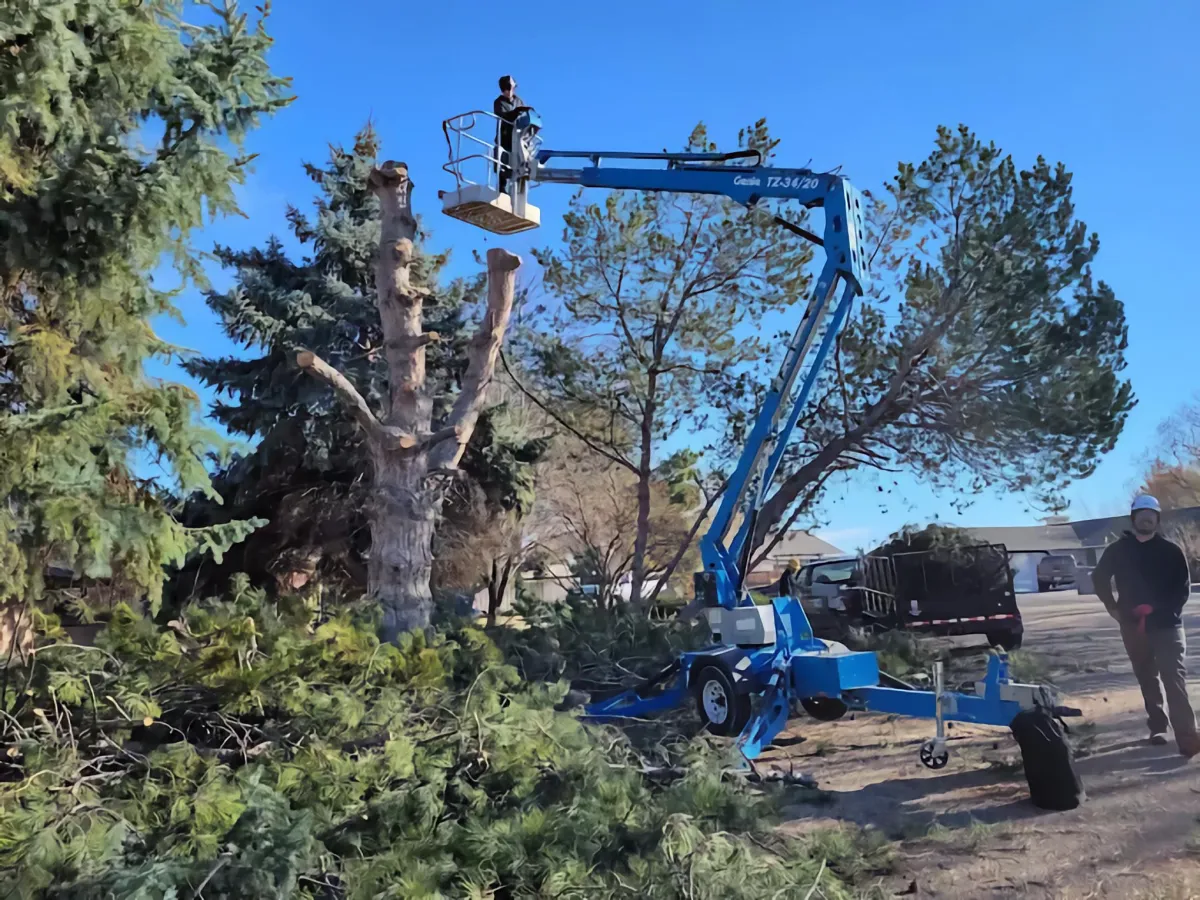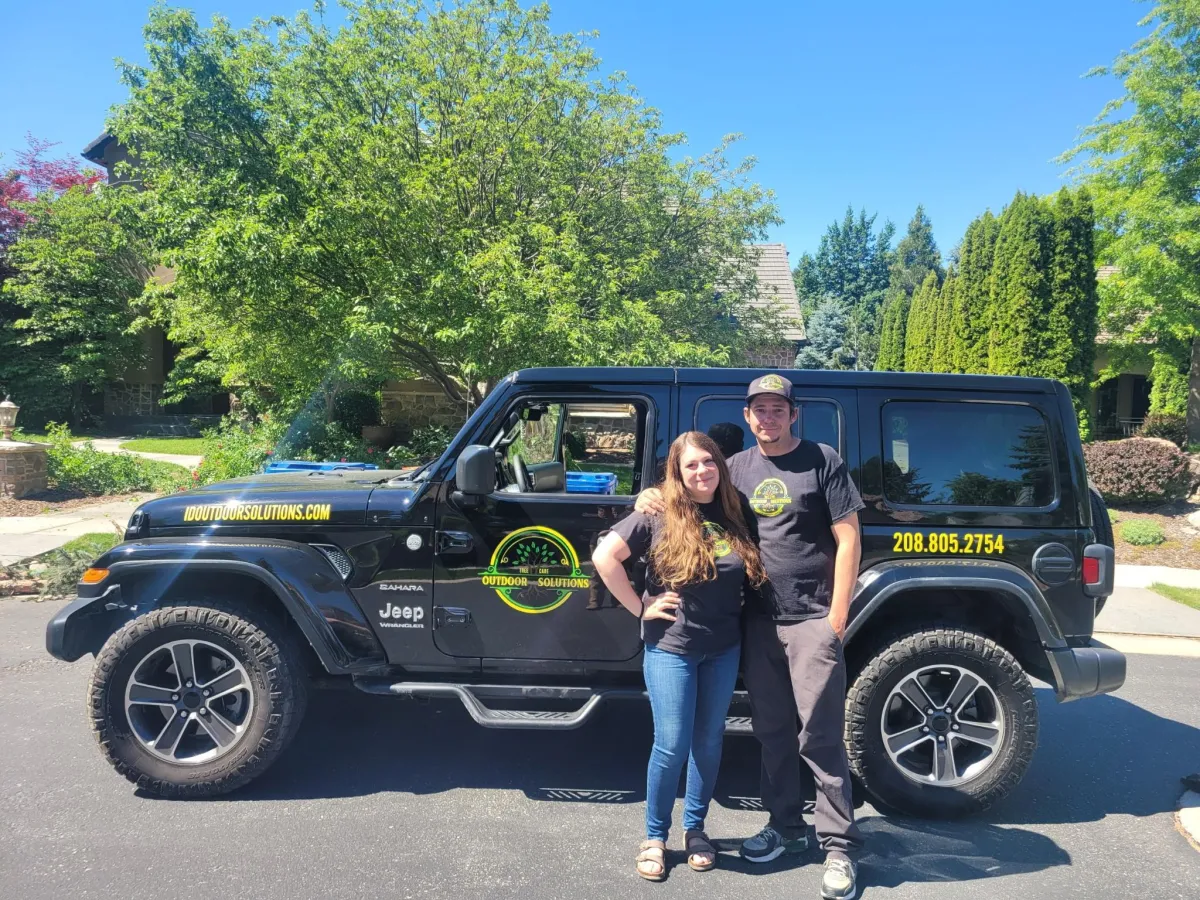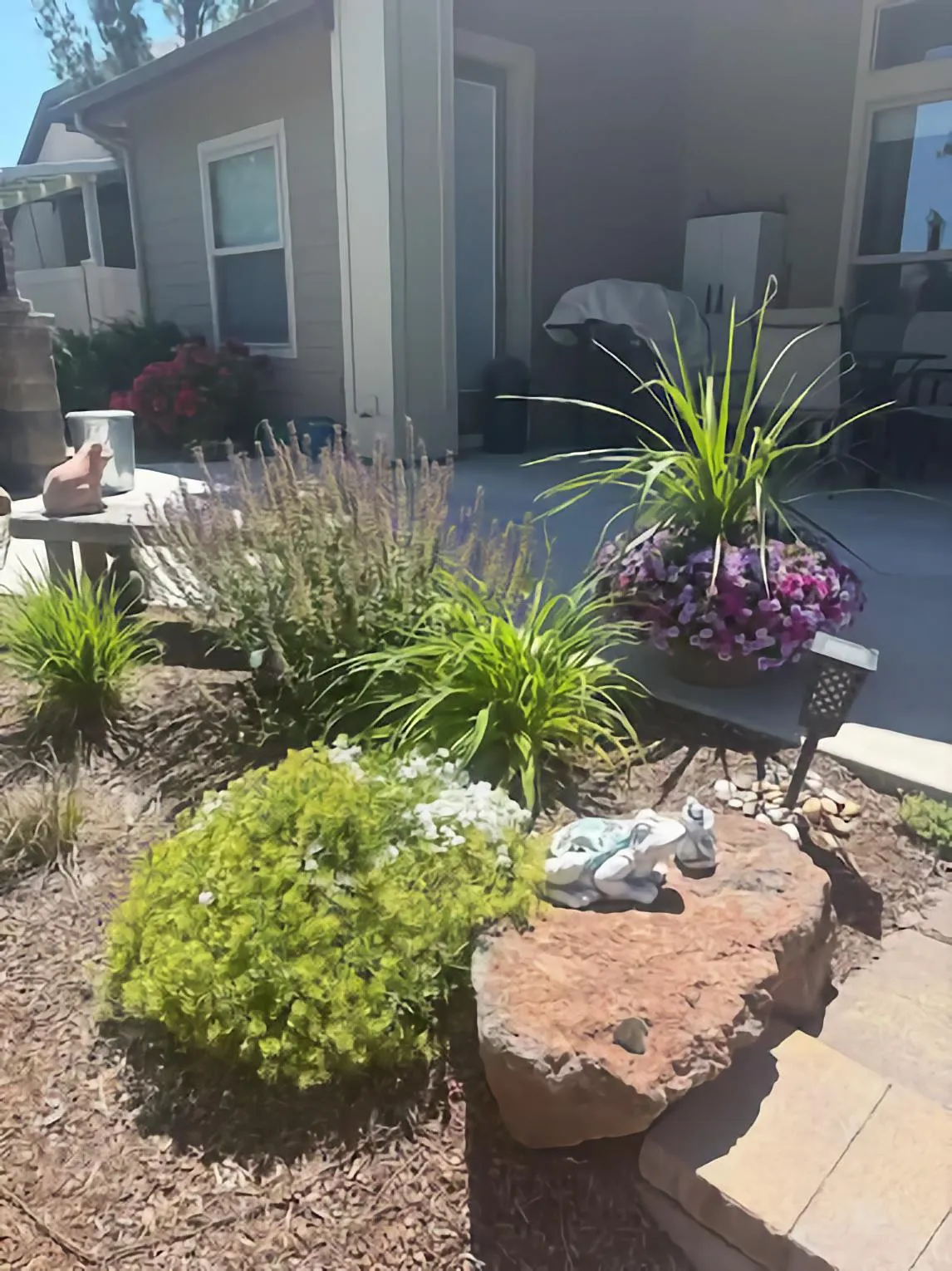
Tree Transplanting
Mature Tree Relocation Services
Root Ball Preservation Technology
Landscape Renovation Solutions

Professional Tree and
Landscaping Services
in the Boise Area
Professional Tree and Landscaping Services in the Boise Area
Expert Tree Care
Tree & Plant Removal
Water-Saving Xeriscape
Landscaping Solutions
Professional Tree and
Landscaping Services
in the Boise Area
Professional Tree Transplanting Service in Boise, Idaho
As a certified arborist with over 18 years of experience serving the Boise metro area, I've witnessed some truly remarkable tree rescue operations that most people would consider impossible. Two years ago, I was contacted by a developer in Eagle who needed to relocate a magnificent 40-year-old honey locust that stood directly in the path of their planned driveway expansion. Rather than condemning this beautiful specimen to the chainsaw, we successfully transplanted it to a perfect new location where it now anchors their enhanced landscape design.
Watching that tree leaf out vigorously in its new home the following spring reminded me why tree transplanting represents the ultimate intersection of horticultural science and heavy equipment operation. At Idaho Outdoor Solutions, we specialize in moving valuable trees that most people assume are permanent fixtures, giving property owners flexibility to redesign landscapes while preserving their most treasured living investments.

The Science of Moving Established Trees
Tree transplanting challenges fundamental assumptions about plant biology and requires understanding complex physiological processes that determine survival versus death during relocation stress. Unlike smaller plants that recover quickly from root disturbance, mature trees must maintain water uptake to massive canopies while rebuilding severed root systems in unfamiliar soil environments.
Success depends on timing transplants to coincide with natural dormancy periods when trees have maximum energy reserves and minimal water demands. Idaho's brief transplanting windows during late fall and early spring provide optimal conditions for root system recovery before summer heat stress or winter survival challenges overwhelm relocated trees.
Root ball preparation represents the most critical factor determining transplant survival. Our specialized equipment creates precise root ball dimensions that preserve maximum feeder root density while maintaining manageable weight and size for transport. This delicate balance between root preservation and logistical feasibility requires extensive experience with different species and soil conditions.
Post-transplant care becomes even more critical than initial installation technique. Transplanted trees require intensive monitoring and support during their first growing seasons as they reestablish root systems and adapt to new environmental conditions. Many trees that survive the physical moving process fail months later due to inadequate establishment care. When transplanting isn't viable, professional tree removal may be necessary, though we always explore relocation options first.

Maximizing Property Value Through Strategic Tree Relocation
Property renovation projects often create conflicts between valuable existing trees and desired improvements, forcing property owners to choose between landscape preservation and functional enhancements. Tree transplanting eliminates these either-or decisions, allowing property owners to keep their landscape investments while achieving renovation goals.
Construction projects represent the most common transplanting scenarios we encounter throughout the Treasure Valley. Home additions, driveway expansions, and pool installations frequently threaten established trees that took decades to reach maturity. Rather than sacrificing these irreplaceable assets, strategic relocation preserves property character while enabling desired improvements.
Landscape design evolution provides another compelling reason for tree transplanting services. Trees planted in inappropriate locations during initial landscaping often become problems as they mature, blocking views, overwhelming small spaces, or interfering with building systems. Relocation allows property owners to correct these planning mistakes without losing their landscape investments.
Utility conflicts increasingly drive transplanting decisions as properties upgrade electrical, solar, or communication systems. Trees that interfere with new installations can often be relocated to more appropriate locations where they enhance rather than complicate property functionality. Sometimes tree health diagnosis reveals that declining trees aren't good transplant candidates and require different solutions.

OUR PROCESS:
Our Advanced Tree Relocation System
Successful tree transplanting requires coordinating specialized equipment, horticultural expertise, and precise timing to move living trees without compromising their long-term health and survival. Our systematic approach maximizes success rates while minimizing transplant shock.
1. Viability Assessment and Pre-Transplant Preparation
We evaluate tree health, species characteristics, and transplant feasibility to determine success probability and optimal timing. This assessment includes root system analysis, seasonal timing coordination, and new location site preparation to ensure optimal transplant conditions.
2. Professional Excavation and Root Ball Formation
Our specialized tree spade equipment creates precise root balls that preserve maximum root density while maintaining structural integrity for transport. We use advanced techniques to minimize root damage and maintain proper soil moisture throughout the moving process.
3. Relocation and Establishment Support
Professional transport and installation techniques ensure trees arrive at new locations with minimal stress and optimal positioning for recovery. We provide intensive establishment care including proper planting depth, soil amendments, and monitoring protocols during critical recovery periods.
Don't Wait - Let Us Help You Today!

Tree Transplanting Safety and Quality Standards
The Best in Tree AND Landscaping Services
Professional tree transplanting involves operating massive specialized equipment around homes, utilities, and valuable landscape features while handling living trees worth thousands of dollars. These operations require extensive safety protocols and quality control measures to protect both personnel and property.
Our tree spade equipment undergoes rigorous maintenance and safety inspections to ensure reliable performance during complex relocation operations. We coordinate with utility companies and maintain proper clearances from overhead and underground infrastructure throughout the moving process.
Quality transplanting requires precise technique and proper equipment operation to create root balls that preserve tree viability while enabling successful transport. We follow established protocols for root ball sizing, soil moisture management, and handling procedures that maximize transplant survival rates.
Why Choose Idaho Outdoor Solutions for Tree Transplanting
Specialized Equipment and Technical Expertise
Our professional-grade tree spade equipment and certified operators enable successful relocation of mature trees that other services cannot handle, preserving valuable landscape investments during property improvements.
Species-Specific Transplanting Knowledge
Extensive experience with Idaho tree species ensures we understand transplant timing, root ball requirements, and establishment needs for different trees commonly found throughout the Treasure Valley.
Integrated Project Coordination
Our transplanting services coordinate seamlessly with construction projects, landscape renovations, and tree planting installations to provide comprehensive property enhancement solutions.
Comprehensive Establishment Support
We provide ongoing monitoring and care recommendations during critical establishment periods, ensuring transplanted trees successfully adapt to new locations and continue thriving for decades.
Many clients combine transplanting projects with tree trimming and pruning services to reduce canopy stress and improve transplant success rates while enhancing overall tree structure.

Tree Services
Comprehensive tree care solutions for every situation, from routine maintenance to emergency removal.
🌳 Tree Removal
✂️ Tree Trimming & Pruning
🪓 Tree Stump Removal
⚙️ Tree Stump Grinding
🔧 Tree Cabling & Bracing
🌱 Tree Planting
🚛 Tree Transplanting
🔬 Tree Health Diagnosis
Whether you're dealing with a dangerous tree threatening your home in Eagle or need expert pruning for mature trees in Meridian, we provide the skilled tree care that keeps your property safe and beautiful.
Landscaping Services
Creating beautiful, sustainable outdoor spaces that thrive in Idaho's high desert climate.
🎨 Landscape Design
🏗️ Landscape Installation
🌿 Lawn Care
🏡 Lawn Landscaping
🌳 Tree Landscaping
🏠 Yard Landscaping
🌵 Xeriscape Installation
From water-wise xeriscaping perfect for our climate to traditional lawn installations, we create outdoor spaces that enhance your property value while respecting our local environment and water resources.
Emergency & Debris Services
24/7 emergency response and comprehensive cleanup services for storm damage and hazardous situations.
🚨 24-Hour Emergency Tree Service
⛈️ Emergency Storm Damage Cleanup
🧹 Yard Debris Removal
🔥 Fire Mitigation Services
🛡️ Hazardous Tree Assessment
When Boise's unpredictable weather strikes, we're ready with emergency equipment and experienced crews to handle dangerous situations and restore your property quickly and safely.
F.A.Q
Frequently Asked Questions About Tree Transplanting
What size trees can be successfully transplanted?
We can relocate trees up to 6-8 inch trunk diameter with high success rates, though viability depends on species, health, and seasonal timing. Larger trees become increasingly challenging but may be possible under optimal conditions.
When is the best time for tree transplanting in Idaho?
Late fall (November) and early spring (March-April) provide optimal transplanting windows when trees are dormant but soil conditions allow equipment operation. Summer transplanting has very low success rates.
How much does professional tree transplanting cost?
Costs vary significantly based on tree size, distance moved, and site access requirements. Typical transplanting projects range from $500-2,500 per tree including excavation, transport, and replanting services.
What is the survival rate for transplanted trees?
Success rates vary by species and conditions, but properly transplanted trees during optimal timing have 70-85% survival rates with appropriate establishment care. Success depends heavily on post-transplant care quality.
Can any tree species be transplanted successfully?
Some species transplant much better than others. Deciduous trees generally transplant more successfully than evergreens, and younger trees typically survive better than very mature specimens.
How long does it take transplanted trees to recover?
Most trees require 2-3 growing seasons to fully establish new root systems and return to normal growth patterns. Visible recovery signs typically appear during the first growing season after transplanting.
Do you provide guarantees on transplanted trees?
We offer limited warranties on transplanted trees when clients follow our recommended establishment care protocols. Warranty terms depend on species, timing, and specific site conditions.
Ready to Relocate Your Valuable Trees?
Don't sacrifice mature trees for property improvements. Professional tree transplanting preserves your landscape investments while enabling desired renovations and enhancements.
Boise Tree Transplanting Service Area
From our location at 7307 W Swift Lane in Boise, we provide professional tree transplanting and relocation services throughout the greater Boise metro area. We serve customers in Boise, Eagle, Garden City, Meridian, Nampa, and surrounding communities who need to relocate valuable trees during construction or landscape renovation projects.
Whether you're moving heritage trees to accommodate home additions in the Boise Foothills, relocating specimens during landscape redesign projects in Eagle, or preserving valuable trees during development projects in Meridian, our specialized equipment and expertise provide successful tree relocation throughout Ada County and Canyon County.

Transforming Outdoor Spaces, One Yard at a Time.
Quick Links
Home
About Us
Services
Useful Links
Testimonials
FAQ's
Blog
